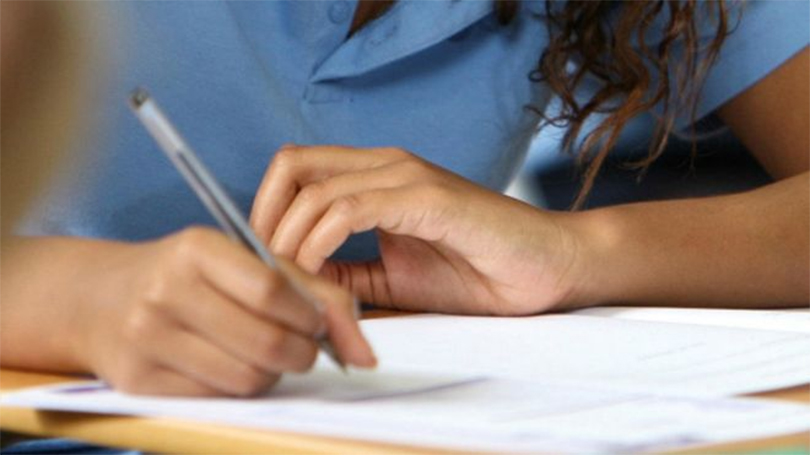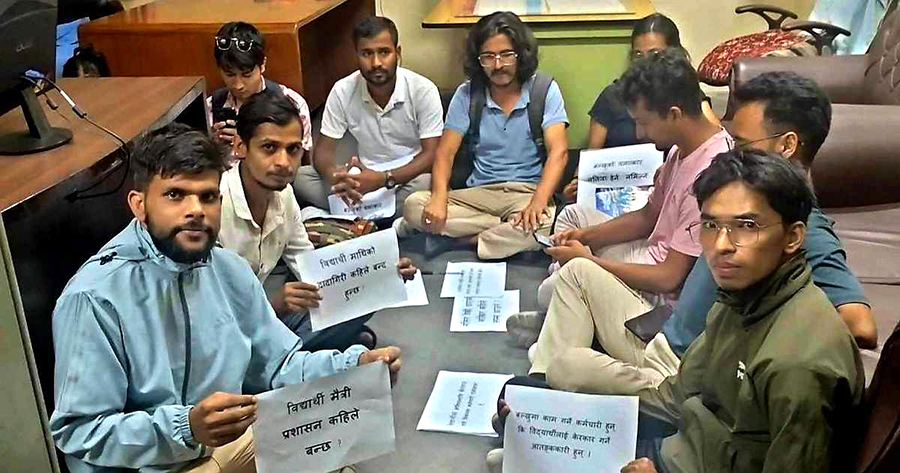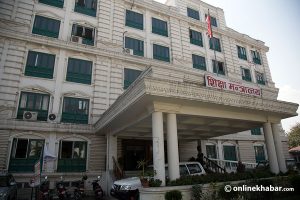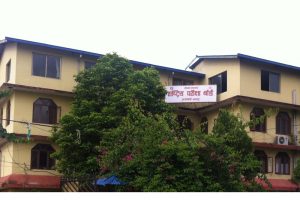The National Examinations Board (NEB) has published the results of grade 12 examinations a few days ago. This year, grade 12 examinations were held in a different modality than in the previous years, citing the Covid-19 pandemic.
As per the (Class 12) Student Evaluation, Examination Operation, Management, Documentation and Certification Working Procedure made public by the board, the 12th graders were partially evaluated on the basis of the marks obtained by them in the grade 11 last year. Likewise, internal evaluations by the schools had also been given a significant 20 per cent weight.
Many of the educationists, students and teachers were doubtful about the fairness of the examinations’ evaluation in the changed modality.

As the results of the grade 12 examinations are out by now, educationists, teachers, students and the NEB officials have got to analyse the results. Now, most of them say the assessment has not been fair enough with some still believing it was good.
Better results, but ‘not better’ evaluation
Score-wise, this year’s results were better than the previous ones. Whereas the number of total examinees increased by just 6.21 per cent from the last year, the number of students scoring above 3.6 increased by 125 per cent. Likewise, the number of students scoring between 3.2 and 3.6 increased by a whopping 137 per cent.
Chandra Mani Paudel, the chairperson of the board states, “As the examinations were conducted very late than the usual examination schedule, the students got more time to study and did so.”
Also, the parents put pressure on their children to study hard during their free time as they had nothing else to do. This is why this years’ results have been far better than the previous years, he claims.
| S.N. | GPA | Number of students (2020) | Number of students (2019) |
| 1 | 3.6 to 4.0 | 6,916 | 3,067 |
| 2 | 3.2 to 3.6 | 38,480 | 16,204 |
| 3 | 2.8 to 3.2 | 76,841 | 31,062 |
| 4 | 2.4 to 2.8 | 109,312 | 56,503 |
| 5 | 2.0 to 2.4 | 52,427 | 86,227 |
| 6 | 1.6 to 2.0 | 7,164 | 62,619 |
| 7 | 1.2 to 1.6 | 333 | 19,585 |
| 8 | 0.8 to 1.2 | 4 | 3,524 |
| 9 | 0 to 0.8 | 18,839 | 13,362 |
| 10 | Total | 310,316 | 292,153 |
However, a former examination controller, Santosh Aryal, does not agree with Paudel. If one segregates the data of regular students from the others, it can be clear that the evaluation has not been fair, according to him.
“The number of students scoring lower grades has dropped this year. On the other hand, the number of students scoring higher grades has escalated,” Aryal interprets, “These changes in the significant amounts clearly show that there have not been truthful assessments.”
Likewise, veteran educationist Bidya Nath Koirala says, “The new modality introduced by the board for conducting this year’s grade 12 examinations seems very progressive theoretically. But, practically, it is just the other way round here in Nepal.”
Not only the educationists are dissatisfied with the results, but the students are also unhappy. Rabin Shahi, a student of a Kathmandu-based school, says, “If the board had checked our answer sheets, there would have been a fair evaluation as they [the examiners there] do not know us personally like our school teachers.”

Chanda Paudel, a student of Namuna Secondary School in Nawalparasi feels that giving 40 per cent marks from the grade 11 results negatively affected her grade 12 results. She says, “It is nerve-wracking to see that other students from other schools securing higher grades, not because of studying hard but cheating.”
Paudel also finds 20 per cent evaluation from internal assessment by teachers the most unfair one as the teachers tend to be biased.
Generous teachers and schools
The new modality allowed the schools to conduct the examinations at the schools themselves, and the answers were checked by the teachers of the same schools. In the past, the students had to sit for exams at different exam centres, and the answers would be sent to the board for evaluation.
This time, the fresh written tests contributed only 40 per cent to the students’ scores whereas the other 40 per cent came from the last year’s results and 20 per cent from internal evaluations (by the same teachers).
Prapti Thapa, a teacher in a Kathmandu-based school, says 20 per cent internal evaluation and the written examination at their own schools were an advantage to the students. She accepts the schools and teachers gave much “consideration” to the students keeping in mind the ongoing pandemic.
The NEB chairperson Paudel also admits he found the teachers and schools quite generous to their students while giving marks.
Koirala also says, “As the board itself has already stated this, I don’t think I need to say any further. Our teachers are generous. It can be clearly seen from the SEE results and now grade 12 examination results.”

Koirala thinks parents, students and schools are also not moral in this case. All they want is higher grades, not real evaluation.
Future concerns
Doubts over the model’s fairness are evident in the board’s chairperson Paudel’s statement that this modality will not continue next year.
‘This modality was innovated only for this year due to the circumstances brought by the pandemic,” he says, “The examinations in the coming year will be taken as per the previous modality only.”
Aryal also views that the board should conduct the examination of total 100 marks in different centres (not in own schools), examine, review and do grading by itself.
On the other hand, Koirala recommends a new modality of conducting examinations–standardised tests–so that there will be a fair evaluation of the students. “Through standardised tests, I can test myself, you can also test me,” he says, “These tests will make the students question if there has been real evaluation or not. And, the parents also feel the same about their children’s assessments. Likewise, it will restrict teachers and schools from being too generous.”
Meanwhile, Thapa thinks a bit differently. She shares, “The 20 per cent internal evaluation on the basis of assignments, internal exams, ECA activities, and regularity must be given continuity from the present modality. This way, the students will be sincere throughout the year. Regarding the remaining 80 per cent evaluation, the board itself should conduct the exams.”


























